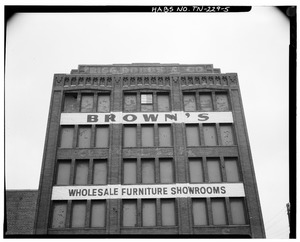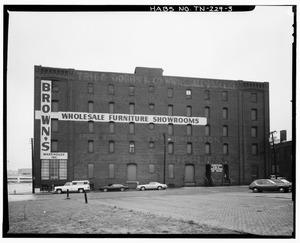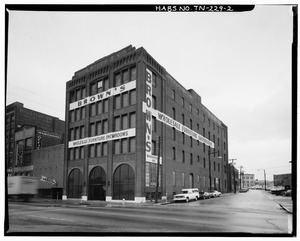Market Street Warehouse Historic District facts for kids
The Market Street Warehouse Historic District is a special area in Chattanooga, Tennessee. It is listed on the National Register of Historic Places, which means it's an important place in American history. This district was built where an old American Civil War fort once stood.
Inside this district, you'll find a place called Warehouse Row. This area, specifically the Stone Fort Block at 1118-1148 Market Street, used to be a large knitting mill. Today, it's a lively spot filled with restaurants, shops, and other businesses. It shows how old buildings can be given new life!
Contents
What is a Historic District?
A historic district is a group of buildings, structures, or sites that are important because of their history or architecture. When a place is added to the National Register of Historic Places, it means the United States government recognizes its value. This helps protect these places for future generations to enjoy and learn from.
History of the Market Street Area
The land where the Market Street Warehouse Historic District stands has a long history. During the American Civil War (1861-1865), a fort was located here. Forts were important military bases used to protect cities and supply routes. After the war, Chattanooga grew into a busy city, especially with its railroads.
From Fort to Factories
As Chattanooga grew, the area became a center for trade and industry. Large warehouses were built to store goods. These buildings were strong and practical, designed to handle lots of products. They were essential for the city's economy.
The Rise of Warehouse Row
One of the most famous parts of this district is Warehouse Row. It was originally a big knitting mill. A knitting mill is a factory where yarn is turned into fabric or clothing, like sweaters or socks. These mills were very important for making clothes in the past.
The buildings of the knitting mill were large and sturdy. They were built to last and to hold many machines and workers. Over time, as industries changed, the mill eventually closed.
Warehouse Row Today
Today, Warehouse Row has been completely transformed. Instead of making clothes, the old mill buildings now house many different businesses.
A Place to Shop and Eat
The north and south buildings of the former knitting mill are now home to a variety of places. You can find many different restaurants, from casual eateries to more fancy dining spots. There are also many retail shops selling clothes, gifts, and other items.
Modern Use of Historic Buildings
This transformation is a great example of adaptive reuse. Adaptive reuse means taking an old building and giving it a new purpose. It helps preserve history while also making sure buildings are still useful for the community. Warehouse Row keeps the historic look of the old mill but serves modern needs. It's a popular place for both locals and visitors in Chattanooga.





